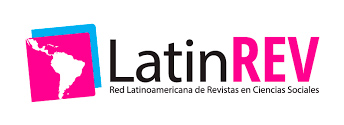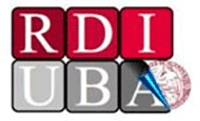Lenguaje, derecho y significados sociales: contribuciones de la antropología lingüística al estudio del derecho
Palabras clave:
Lenguaje, Derecho, Antropología lingüística, Interpretación, Creatividad lingüísticaResumen
Los académicos que estudian la constitución social del derecho aprecian cada vez más la importancia que tiene el lenguaje en los procesos legales. Este trabajo considerará, entonces, la siguiente cuestión: ¿Qué diferencia genera esta atención al lenguaje en los estudios sobre el derecho? Para contestarla voy a discutir un número de formas de aproximarse al lenguaje, sugiriendo que algunas son más útiles que otras para el análisis social y legal. En particular, haré foco en la contribución de las aproximaciones antropológicas al lenguaje y en dos investigaciones, Justicia y revancha entre los trabajadores americanos, de Sally Engle Merry,
y Reglas versus relaciones humanas: etnografía del discurso legal, de John M. Conley y William M. O’Barr. La primera sección de este trabajo se abocará a una descripción de los estudios antropológicos y lingüísticos sobre el lenguaje. La segunda sección se focalizará en el estudio del lenguaje y su impacto en el ámbito del derecho.
Descargas
Citas
ATKINSON, J. Maxwell y Paul DREW (1979), Order in court: the organization of verbal interaction in judicial settings, Atlantic Highlands, NJ: Humanities Press.
BAUMAN, Richard y Charles BRIGGS (1990), “Poetics and performance as critical perspectives on language and social life”, en 19 Annual Review of Anthropology 59.
BLOCH, Maurice (1975), “Introduction” en BLOCH, M. (ed.), Political language and oratory in traditional society, Nueva York, Academic Press.
BOURDIEU, Pierre (1977), Outline of a theory of practice, Cambridge, Cambridge University Press.
BRENNEIS, Donald (1984), “Grog and gossip in Bhatgaon: style and substance in Fiji Indian Conversation”, en 11 American Ethnologist 487.
– (1987), “Performing passions: aesthetics and politics in an occasionally egalitarian community”, en 14 American Ethnologist 236.
– (1988), “Language and disputing”, en 17 Annual Review of Anthropology 221.
BRENNEIS, Donald y Fred R. MYERS (eds.) (1984), Dangerous words: language and politics in the Pacific, Nueva York, New York University Press.
BRIGGS, Charles L. (1986), Learning how to ask: a sociolinguistic appraisal of the role of the interview in social science research, Cambridge, Cambridge University Press.
BROWN, Penelope (1980), “Why women are more polite: some evidence from
a Mayan community”, en MCCONNELL-GINET, S., R. BORKER y N. FURMAN (eds.), Women and language in literature and society, Nueva York, Praeger.
CHARROW, Robert P. y Veda R. CHARROW (1979), “Making legal language understandable: a psycholinguistic study of jury instructions”, en 79 Columbia Law Review 1306.
CICOUREL, Aaron (1974), Cognitive sociology: language and meaning in social interaction, Nueva York, Free Press.
COMAROFF, Jean (1985), Body of power, spirit of resistance: the culture and history of a South African people, Chicago, University of Chicago Press.
COMAROFF, Jean y John COMAROFF (1991), Of revelation and revolution: Christianity, Colonialism and Consciousness in South Africa, vol. 1, Chicago, University of Chicago Press.
CONLEY, John, William M. O’BARR y E. Allan LIND (1978), “The power of language: presentational style in the courtroom”, en Duke Law Journal, vol. 1978:1375.
COOMBE, Rosemary (1991a), “Contesting the self: negotiating subjectivities in nineteenth century Ontario defamation trials”, en 11 Studies in Law, Politics & Society 3.
– (1991b) “Objects of property and subjects of politics: intellectual property laws and democratic dialogue”, en 69 Texas Law Review 1853.
CRAPANZANO, Vincent (1992), Hermes’ Dilemma and Hamlet’s Desire: on the epistemology of interpretation, Cambridge, MA: Harvard University Press.
CRENSHAW, Kimberlé (1988), “Race, reform, and retrenchment: transformation and legitimation in antidiscrimination law”, en 101 Harvard Law Review 1331.
DANET, Brenda (1980), “Language and legal process”, en 14 Law & Society Review 445.
DANET, Brenda, Kenneth B. HOFFMAN, Nicole C. KERMISH, H. Jeffrey RAFN y Deborah G. STAYMAN (1980), “An ethnography of questioning in the courtroom”, en SHUY, R. y A. SHNUKAL (eds.), Language use and the uses of languages, Washington D. C., Georgetown University Press.
DELGADO, Richard (1989), “Storytelling for oppositionists and others: a plea for narrative”, en 87 Michigan Law Review 2411.
– (1990), “Mindset and metaphor”, en 103 Harvard Law Review 1872.
DURANTI, Alessandro (1984), “Lauga and Talanoaga: two speech genres in a Samoan political event”, en BRENNEIS, D. y F. R. MYERS (ed.), Dangerous worlds: language and politics in the Pacific, Nueva York, New York University Press.
EIDHEIM, Harold (1969), “When ethnic identity is a social stigma”, en BARTH, F. (ed.), Ethnic groups and boundaries, Boston, Little, Brown y Co.
ERRINGTON, James Joseph (1988), Structure and style in Javanese: a semiotic view of linguistic etiquette, Filadelfia, University of Pennsylvania Press.
FAIRCLOUGH, Norman (1989), Language and power, Londres, Longman.
FINEMAN, Martha L. (1991), “Images of mothers in poverty discourses”, en 1991 Duke Law Journal 274.
FOULCAULT, Michel (1980), Power/Knowledge interviews and other writings, 1972-1977, ed. Colin Gordon, Nueva York, Pantheon.
FROHMANN, Lisa (1991), “Discrediting victims’ allegations of sexual assault”, en 38 Social Problems 213.
GARFINKEL, Harold (1967), Studies in ethnometodology, Englewood Cliffs, NJ: Prentice-Hall.
GOLDMAN, Lawrence (1983), Talk never dies: the language of Huli disputes, Londres, Tavistock.
GOODWIN, Marjorie (1980), “He said-she said”: formal cultural procedures for the construction of gossip dispute activity”, en 7 American Ethnologist 674.
GUMPERZ, John J. (1964), “Linguistic and social interaction in two communities”, en 66 (nro. 6, p. 2) American Anthropology 137.
– (1982), Discourse strategies, Cambridge, Cambridge University Press.
GUMPERZ, John J. y Dell HYMES (eds.) (1972), Directions in sociolinguistics: the ethnography of communication, Nueva York, Holt, Rhinehart y Winston.
HANKS, William F. (1990), Referential practice: language and lived space among the Maya, Chicago, University of Chicago Press.
HICKMANN, Maya (1980), “Creating referents in discourse: a developmental analysis of discourse cohesion”, en Papers from the Sixteenth Regional Meeting of the Chicago Linguistic Society: Parasession on Anaphora, Chicago, Chicago Linguistic Society.
HIRSCH, Susan (1989), “Asserting male authority, recreating female experience: gendered discourse in coastal Kenyan Muslim courts”, en American Bar Foundation Working Paper Series 1, nro. 8906, Chicago, American Bar Foundation.
HUSPEK, Michael (1991), “Review of ‘Language and Power’ (N. Fairclough)”, en 20 Language in Society 131.
HUTCHINS, Edwin (1980), Culture and inference: a Trobriand case study, Cambridge, MA, Harvard University Press.
– (1981), “Reasoning in Trobriand discourse (1979)”, en CASSON, R. W. (ed.), Language, culture and cognition: anthropological perspectives, Nueva York, Macmillan.
HYMES, Dell H. (1974), Foundations in sociolinguistics, Filadelfia, University of Pennsylvania Press.
IRVINE, Judith T. (1979), “Formality and informality in communicative events”, en 81 American Anthropology 773.
– (1989), “When talk isn’t cheap: language and political economy”, en 16 American Ethnologist 248.
KEENAN, Elinor Ochs (1975), “A sliding sense of obligatoriness: the polystructure of Malagasy oratory”, en BLOCH, M. (ed.), Political language and oratory in traditional society, New York, Academic Press.
KURYLOWICZ, Jerzy (1945-49), “La nature des procés dits ‘analogiques’”, en 5 Acta Lingüística 15.
– (1972), “The role of deitic elements in linguistic evolution”, en 5 Semiotica 174.
LABOV, William (1964), “Phonological correlates of social stratification”, en 66
(nro. 6, pt. 2) American Anthropology 164.
– (1966), The social stratification of English in New York City, Washington, DC, Center for Applied Linguistics.
LAKOFF, Robin (1975), Language and woman’s place, Nueva York, Harper y Row.
LAZARUS-BLACK, Mindie (1991), “Slaves, masters, and magistrates: law and the politics of resistance in the English speaking Caribbean, 1736-1834”, en American Bar Foundation Working Papers Series 1, nro. 9124, Chicago, American Bar Foundation.
LEVI, Edward H. (1949), An introduction to legal reasoning, Chicago, University of Chicago Press.
LEVI, Judith N. (1982), Linguistics, language and law: a topical bibliography, Bloomington, Indiana University Linguistics Club.
– (1986), “Applications of linguistics to the language of legal interactions”, en BJARKMAN, P. C. y V. RASKIN (eds.), The real-world linguist: linguistic applications in the 1980’s, Norwood, NJ, ABLEX.
LIND, E. Allan, Robert J. MACCOUN, Patricia A. EBENER, William L. F. FELSTINER, Deborah R. HENSLER, Judith RESNIK y Tom R. TYLER (1990), “In
the eye of the beholder: tort litigants’ evaluations of their experiences in the civil justice system”, en 24 Law & Society Review 953.
LOFTUS, Elizabeth F. (1975), “Leading questions and the eyewitness report”, en 7 Cognitive Psychology 560.
– (1979), Eyewitness testimony, Cambridge MA, Harvard University Press.
LUCY, John A. (1992), Grammatical categories and cognition: a case study of the linguistic relativity hypothesis, Cambridge, Cambridge University Press.
LYONS, John (1977), Semantics, vol. 1, Nueva York, Cambridge University Press.
MATHER, Lynn y Barbara YNGVESSON (1980-81), “Language, audience, and the transformation of disputes”, en 15 Law & Society Review 775.
MATSUDA, Mari J. (1987), “Looking to the bottom: critical legal studies and reparations”, en 22 Harvard Civil-Rights Civil Liberties Law Review 323.
MATSUDA, Mari J. (1989), “Public response to racist speech: considering the victim’s story”, en 87 Michigan Law Review 2320.
MAYNARD, Douglas W. (1984), Inside plea bargaining: the language of negotiation, New York, Plenum.
MERRY, Sally Engle (1990), “The discourses of mediation and the power of naming”, en 2 Yale Journal of Law y the Humanities 1 (1990).
MERRY, Sally Engle y Susan S. SILBEY (1984), “What do plaintiffs want? Reexamining the concept of dispute”, en 9 Justice System Journal 151.
MERTZ, Elizabeth (1985), “Beyond symbolic anthropology: introducing semiotic mediation”, en MERTZ, E. y R. J. PARMENTIER, Semiotic mediation: sociocultural and psychological perspectives, Orlando, FL, Academic Press.
– (1988a), “The uses of history: language, ideology and law in the United States and South Africa”, en 22 Law & Society Review 661.
– (1988b), “Consensus and dissent in U. S. legal opinions: narrative structure and social voices”, en 30 Anthropological Linguistics 369.
– (1989), “Sociolinguistic creativity”, en DORIAN, N. (ed.), Investigating Obsolescence: studies in language contraction and death, Cambridge, Cambridge University Press.
– (1992a), “Creative acts of translation: James Boyd White’s intellectual integration”, en 4 Yale Journal of Law & the Humanities 165.
– (1992b), “Learning what to ask: metapragmatic factors and methodological reification”, en LUCY, J. (ed.), Reflexive language, Cambridge, Cambridge University Press.
– (n.d.), “Recontextualization as socialization: text and pragmatics in the Law school classroom”, en SILVERSTEIN, M. y G. URBAN (eds.), De Centered Discourse (in preparation).
MERTZ, Elizabeth y Richard PARMENTIER (eds.) (1985), Semiotic mediation: sociocultural and psychological perspectives, Orlando, FL, Academic Press.
MINOW, Martha (1990), Making all the difference: inclusion, exclusion, and American law, Ithaca, NY, Cornell University Press.
MYERS, Fred R. (1986), “Reflections on a meeting: structure, language, and the polity in a small-scale society”, en 13 American Ethnologist 430.
O’BARR, William M. (1981), “The language of the law”, en FERGUSON, C. y S. B. HEATH (eds.), Language in the USA, Cambridge, Cambridge University Press.
– (1982), Linguistic evidence: language, power, and strategy in the courtroom, Nueva York, Academic Press.
PARMENTIER, Richard J. (1987), The sacred remains: myth, history and polity in Belau, Chicago, University of Chicago Press.
– (1992), “The political function of reported speech: a Belauan Example”, en LUCY, J. A. (ed.), Reflexive language, Cambridge, Cambridge University Press.
PEIRCE, Charles Sanders (1974), Collected papers of Charles Sanders Peirce, vol. 2, Cambdridge, MA, Harvard University Press.
POMERANTZ, Anita (1978), “Attributions of responsibility: blamings”, en 12 Sociology 115.
QUAY, Lorene C., Marilyn MATHEWS y Beth SCHWARZMUELLER (1977), “Communication encoding and decoding in children from different socio economic and racial groups”, en 13 Developmental Psychology 415.
ROSEN, Lawrence (1989a), “Responsibility and compensatory justice in Arab culture and law”, en LEE, B. y G. URBAN (eds.), Semiotics, self and society, Berlin, Mouton de Gruyter.
– (1989b), The anthropology of justice: law as culture in Islamic society, Nueva York, Cambridge University Press.
SACKS, Harvey, Emanuel A. SCHEGLOFF y Gail JEFFERSON (1974), “A simplest systematic for the organization of turn-taking for conversation”, en 50 Language 696.
SAUSSURE, Ferdinand de (1959), Course in general linguistics, Nueva York, McGraw-Hill.
SALES, Bruce Dennis, Amiran ELWORK y James J. ALFINI (1977), “Improving comprehension for jury instructions”, en SALES, B. (ed.), perspectives in law and psychology, vol. 1, The criminal justice system, Nueva York, Plenum.
SARAT, Austin y William FELSTINER L. F. (1986), “Law and strategy in the divorce lawyer’s office”, en 20 Law y Society Review 93.
– (1990), “Legal realism in lawyer-client communications”, en LEVI, J. N. y A. G. WALKER (eds.), Language in the judicial process, Nueva York, Plenum.
– (1988), “Law and social relations: vocabularies of motive in lawyer/client interaction”, en 22 Law y Society Review 737.
SILBEY, Susan S. y Sally E. MERRY (1986), “Mediator settlement strategies”, en 8 Law y Policy 7.
SILVERSTEIN, Michael (1976), “Shifters, linguistic categories, and cultural description”, en BASSO, K. H. y H. A. SELBY (eds.), Meaning in anthropology, Albuquerque, University of New Mexico Press.
SILVERSTEIN, Michael (1979), “Language structure and linguistic ideology”, en CLYNE, P. R., W. F. HANKS y C. L. HOFBAUER (eds.), The elements: a parasession on linguistic units and levels, Chicago, Chicago Linguistic Society.
– (1981), “The limits of awareness”, en Working Papers in Sociolinguistics, nro. 84, Austin, Southwest Educational Development Laboratory.
– (1985), “Language and the culture of gender: at the intersection of structure, usage and ideology”, en MERTZ, E. y R. J. PARMENTIER (eds.), Semiotic mediation: sociocultural and psychological perspectives, Orlando, FL, Academic Press.
– (1987), “The three faces of ‘function’: preliminaries to a psychology of language”, en HICKMANN, M. (ed.), Social and functional approaches to language and thought, Orlando, FL, Academic Press.
– (1992), “Metapragmatic discourse and metapragmatic function”, en LUCY, J. A. (ed.), Reflexive language, Cambridge, Cambdridge University Press.
TANNEN, Deborah (1989), Talking voices: repetition, dialogue and imagery in conversational discourse, Cambridge, Cambridge University Press.
VAN DEN BROECK, Jef (1977), “Class differences in syntactic complexity in the Flemish town of Maaseik”, en 6 Language in Society 149.
WEISSBOURD, Bernard y Elizabeth MERTZ (1985), “Rule centrism versus legal creativity: the skewing of legal ideology through language”, en 19 Law & Society Review 623.
WEST, Candance y Don ZIMMERMAN (1975), “Sex roles, interruptions, and silences in conversation”, en THORNE, B. y N. HENLEY (eds.), Language and sex, Rowley, MA, Newbury House.
WHITE, James Boyd (1990), Justice as translation: an essay in cultural and legal criticism, Chicago, University of Chicago Press.
WILLIAMS, Patricia J. (1991), The alchemy of race and rights, Cambridge, MA, Harvard University Press.
WOOLARD, Kathryn A. (1989), Double talk: bilingualism and the politics of ethnicity in Catalonia, Standford, CA, Standford University Press.
Descargas
Publicado
Cómo citar
Número
Sección
Licencia

Esta obra está bajo una licencia internacional Creative Commons Atribución-NoComercial 4.0.














